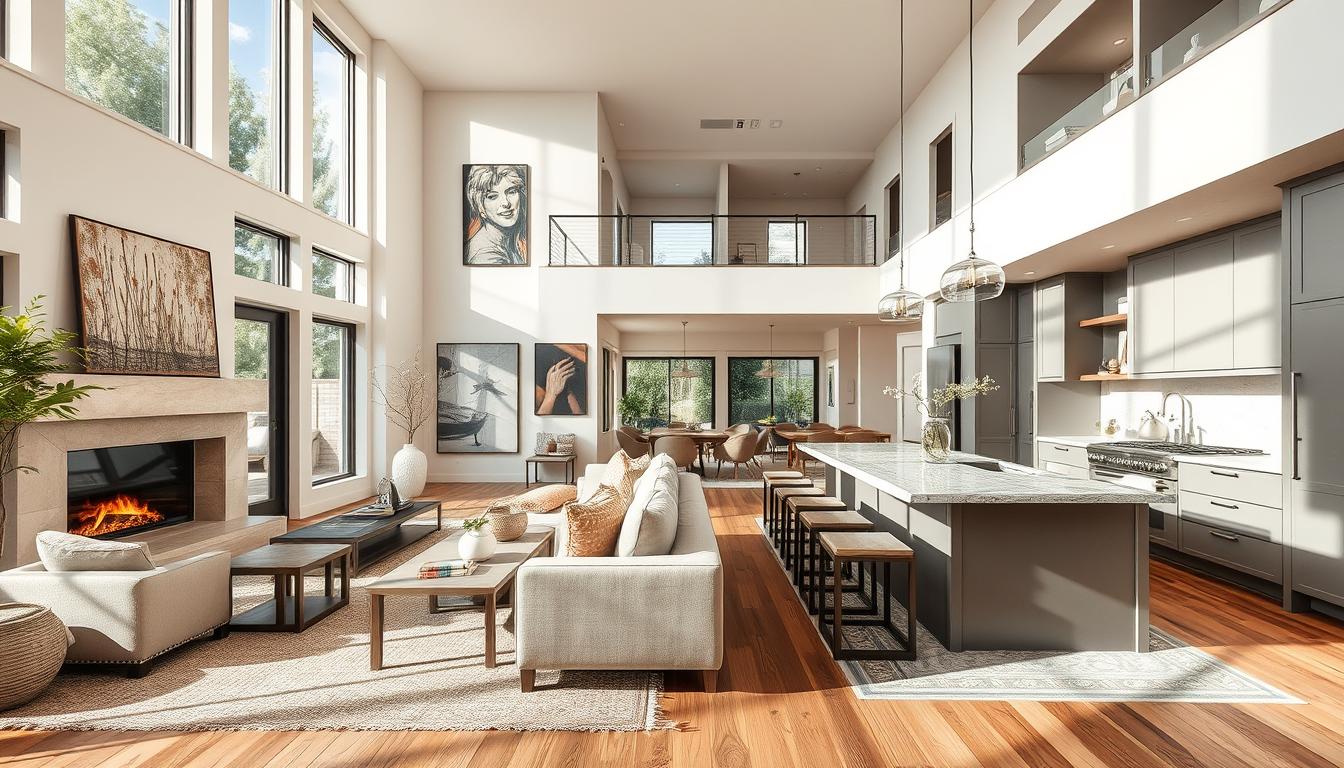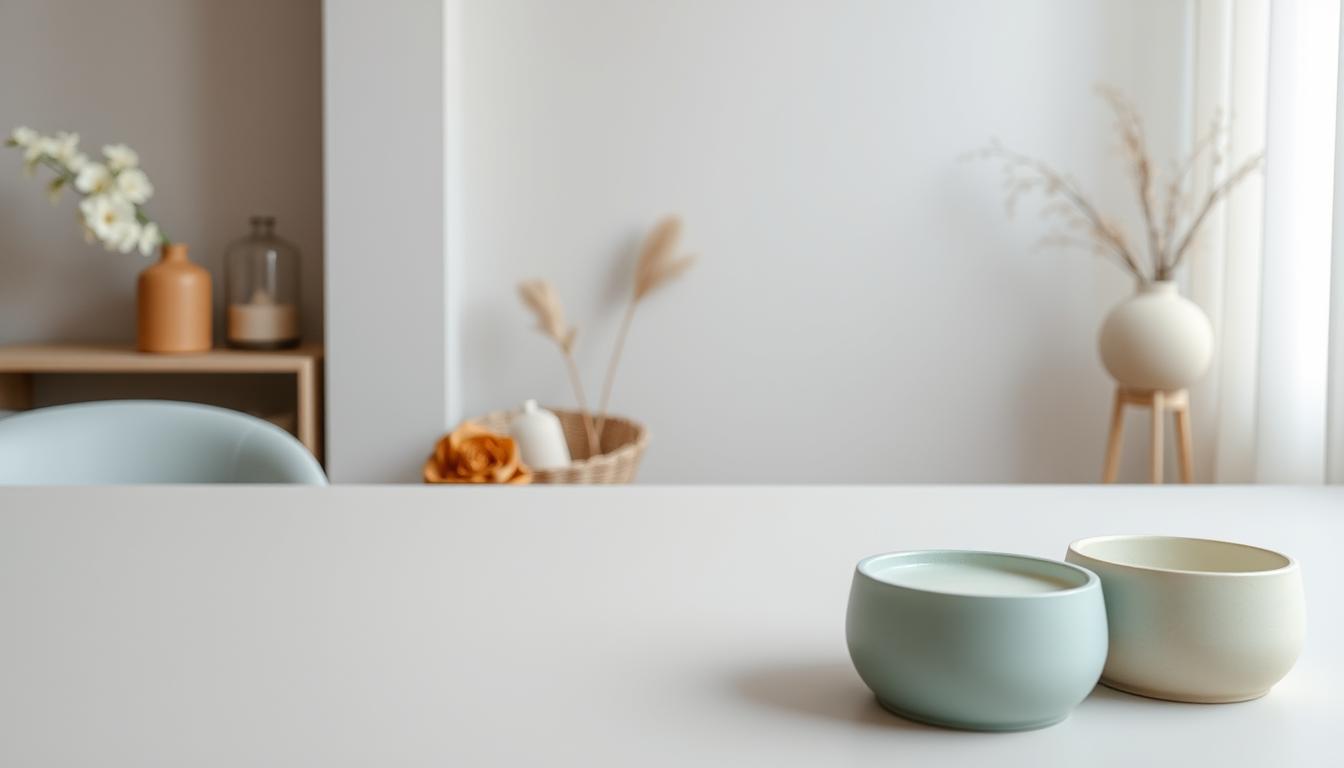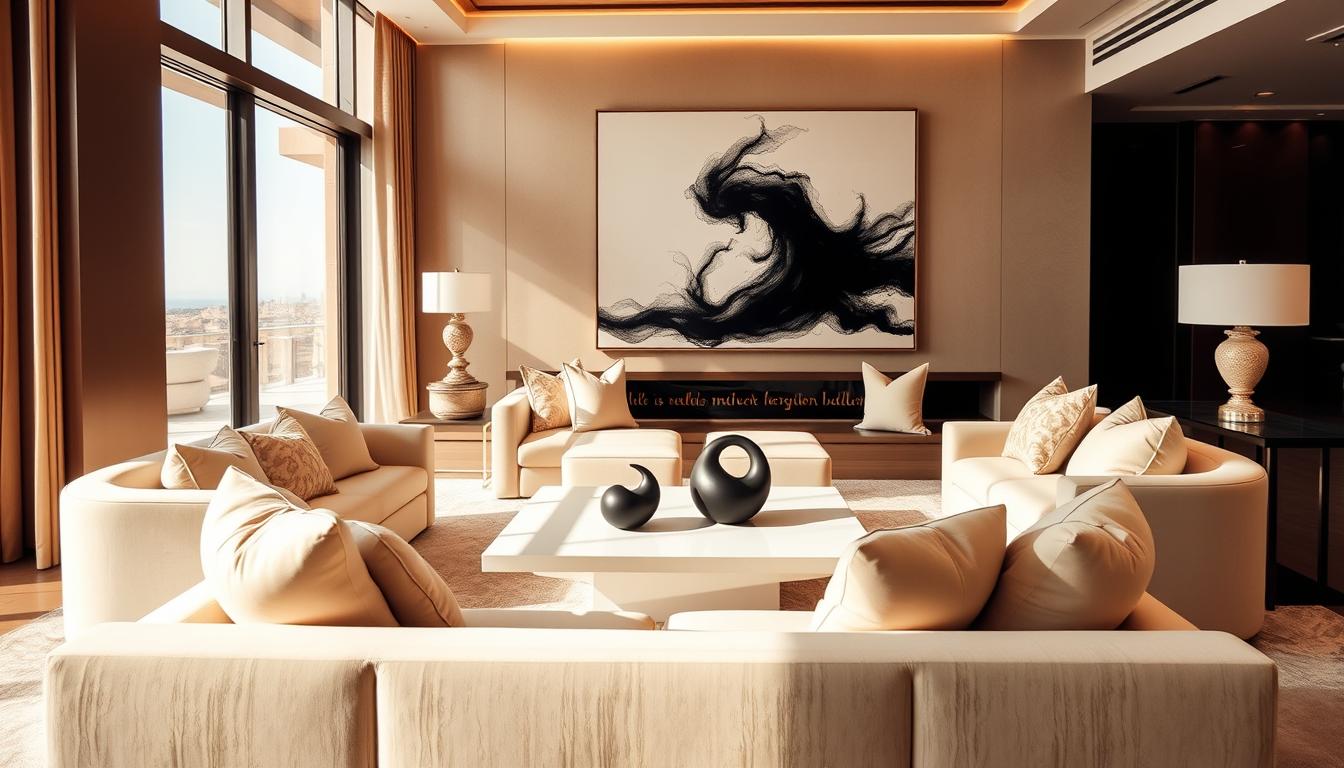Did you know that how we design our homes can really affect our mood and well-being? With so many home interior design styles out there, picking the right one can be tough.
We’ll take you on a journey through interior design. You’ll see styles like modern, traditional, contemporary, and eclectic. We’ll help you find the perfect match for your taste and lifestyle.
If you want to change a room or your whole house, knowing the different styles is key. It’s the first step to making a space that shows off who you are.
Key Takeaways
- Understanding the impact of interior design on well-being
- Exploring various home interior design styles
- Identifying the perfect style for your personality
- Learning how to apply your chosen style to your home
- Creating a space that reflects your identity
Understanding Interior Design Styles
Knowing the different interior design styles is key to a beautiful and functional home. Interior design combines beauty, function, and comfort. It’s a field that touches many aspects of our living spaces.
What is Interior Design?
Interior design is about making indoor spaces better and more beautiful. It aims to create a healthier and more pleasing environment. Designers consider what people need and want, using various principles to meet those needs.
Good interior design is more than just decorating. It’s about making a space that works well and feels good. This means picking the right furniture, colors, lights, and textures. The goal is to make a space that feels welcoming and inviting.
Importance of Choosing a Style
Choosing an interior design style is important. It helps make your home look and feel consistent. Styles like modern interior design and traditional interior design bring unique qualities to a room.
By picking a style that fits you and your needs, you can make your home feel warm and cozy. A well-chosen style can also make your space more useful and enjoyable. It makes your home a place you love to be.
Modern Interior Design
Modern interior design is known for its clean lines, minimal decor, and focus on function. It’s loved for its simplicity and elegance.
Characteristics of Modern Design
Modern interior design has a few key features:
- Clean Lines: Furniture and architectural elements have straight lines and few curves.
- Minimal Ornamentation: It avoids clutter and too much decoration, aiming for simplicity.
- Functionality: Every piece of furniture and decor has a purpose, making the space more useful.
- Open Spaces: Modern interiors often have open floor plans to feel more spacious.
For more tips on modern design, check out Tarkett’s modern design tips.
Key Color Palettes
Modern design often uses a neutral color palette. Shades of white, gray, and beige are favorites. These colors offer a clean base for bold accent colors.
| Color | Description | Usage |
|---|---|---|
| White | Clean and minimalist | Walls, trim |
| Gray | Neutral and versatile | Furniture, accents |
| Beige | Warm and inviting | Walls, flooring |
Understanding modern design’s characteristics and color palettes helps you create a sleek, sophisticated space. It shows off your personal style.
Contemporary Interior Design
Contemporary interior design is always changing. It focuses on making spaces look good and match our lifestyle today.
Differences Between Modern and Contemporary
Many confuse “modern” and “contemporary” in design. Modern design is from the mid-20th century, known for simplicity and function. Contemporary design is about now, using the newest styles and tech.
Modern design is fixed, showing a certain time. Contemporary design keeps changing, always new.
Elements of Contemporary Design
Contemporary design has key elements, like:
- Open floor plans for a spacious feel
- A mix of materials for depth and interest
- Big windows and skylights for lots of light
- Bold colors, with neutral tones and bright accents
- Technology, like smart homes, for better function
Popular Materials Used
Choosing materials is key in contemporary design. Popular picks include:
| Material | Characteristics | Uses |
|---|---|---|
| Reclaimed Wood | Sustainable, unique texture | Flooring, wall decor, furniture |
| Glass | Transparent, versatile | Windows, partitions, decorative accents |
| Steel | Durable, modern aesthetic | Furniture frames, decorative elements |
These materials make spaces look great and connect with nature.
Traditional Interior Design
Traditional interior design is a timeless style that adds warmth and elegance to homes. It uses rich colors, ornate details, and classic furnishings. This creates a cozy and inviting atmosphere.
Defining Traditional Style
The traditional style celebrates classic elements that have lasted through time. It includes intricate patterns, luxurious fabrics, and ornate woodwork. This style offers comfort and luxury, making a space feel like home.
“The essence of traditional design lies in its ability to blend classic elements with a sense of warmth and comfort,” says a renowned interior designer. This style is ideal for those who love classic furnishings and ornate details.
Classic Color Schemes
Classic color schemes are key in traditional interior design. These palettes often include:
- Warm beiges
- Soft creams
- Rich reds
- Deep blues
These colors bring warmth and coziness, making them perfect for traditional design. They help create a timeless and elegant space that shows sophistication.
We suggest balancing these rich colors with neutral accents. This avoids overwhelming the space. It makes the atmosphere harmonious and inviting, showcasing the beauty of traditional design.
Transitional Interior Design
Transitional interior design blends the detailed charm of traditional style with the modern simplicity of contemporary design. It creates a space that is both elegant and welcoming.
Blending Traditional and Contemporary
Finding a balance between traditional and contemporary elements is key in transitional design. You can mix classic furniture with modern decor. For example, a traditional sofa paired with a modern coffee table adds a striking contrast.
Choosing a neutral color palette is crucial. It provides a calm background for both styles. Beige, gray, and taupe are great choices for a transitional look that’s soothing yet sophisticated.
Best Practices for Transitional Spaces
To make a transitional space work, follow these tips:
- Mix traditional and contemporary furniture for a unique atmosphere.
- Use a neutral color palette for a calm backdrop.
- Add different textures like wood, metal, and fabric for depth.
- Balance ornate details with clean lines to avoid clutter.
By following these guidelines, you can achieve a beautiful and functional transitional design. It combines the warmth of traditional design with the simplicity of modern style.
Rustic Interior Design
Embracing rustic interior design means welcoming a cozy, natural feel into your home. It often uses natural materials like wood and stone. This creates a warm, inviting atmosphere that feels both comforting and authentic.
What is Rustic Style?
Rustic style focuses on natural beauty and simplicity. It brings the outdoors inside, using raw, unprocessed materials. This style celebrates the unique qualities of natural materials, making your living space cozy and special.
Materials that Enhance Rustic Design
The right materials are key in rustic interior design. Wood, like reclaimed or distressed wood, is a must. Natural stone, brick, and earthy ceramics also add warmth and texture to a room, making it welcoming.
- Reclaimed wood for furniture and flooring
- Natural stone for fireplaces and walls
- Earthy ceramics for decorative accents
Popular Rustic Trends
There’s a growing interest in sustainable, eco-friendly rustic designs. People are choosing materials that are natural and responsibly sourced. Another trend is mixing rustic elements with modern homes. This blend creates a unique and interesting aesthetic.
Minimalist Interior Design
Minimalist interior design is all about calm and simplicity. It’s not just about looks; it’s a lifestyle that values function over clutter.
Core Principles of Minimalism
Minimalist design has a few key rules. First, it’s all about simplicity. It means avoiding extra stuff and focusing on clean lines. Second, it’s about functionality. Every item in the space should have a purpose. Lastly, it’s about keeping things clutter-free. This creates a peaceful and organized environment.
To follow these rules, you need to be careful with what you choose and where you put it. Think about the space’s purpose and get rid of anything that doesn’t add to it.
How to Achieve a Minimalist Look
To get a minimalist look, you need to decorate and organize with care. Here’s how:
- Begin by clearing out anything you don’t need or that doesn’t have a purpose.
- Pick furniture that’s both functional and simple. Stay away from things with too much decoration.
- Stick to a few colors to keep things calm and cohesive.
- Think about your lighting. Use natural light and choose simple light fixtures.
By following these steps and embracing minimalism, you can make a space that’s not just pretty but also peaceful and useful.
Industrial Interior Design
Industrial interior design has become very popular lately. It celebrates the raw beauty of old spaces. We’ll look at what makes this style special and where it works best.
Understanding Industrial Elements
Industrial design uses raw materials and shows off the building’s bones. You’ll see exposed brick, metal beams, and old wood. These features give a space a tough, city vibe.
Some key elements include:
- Exposed ductwork and pipes
- Metal accents and fixtures
- Reclaimed wood furniture and decor
- Exposed brick and concrete walls
These elements make a space look unique and add history.
Ideal Spaces for Industrial Style
Industrial design fits well in old warehouses or factories. But it also works in modern homes that want a bit of city edge.
| Space Type | Ideal Features | Design Tips |
|---|---|---|
| Loft Apartments | High ceilings, exposed brick | Emphasize the height with vertical decor, and use metal accents. |
| Converted Warehouses | Exposed ductwork, metal beams | Highlight the industrial heritage with reclaimed wood and metal fixtures. |
| Modern Homes | Open floor plans, minimalist decor | Incorporate industrial elements like metal lighting and exposed brick. |
By using industrial elements, homeowners can make a space that’s both unique and eye-catching.
Bohemian Interior Design
Bohemian interior design brings vibrant colors, textures, and global influences into your home. It’s perfect for those who love to show their unique style through their living space.
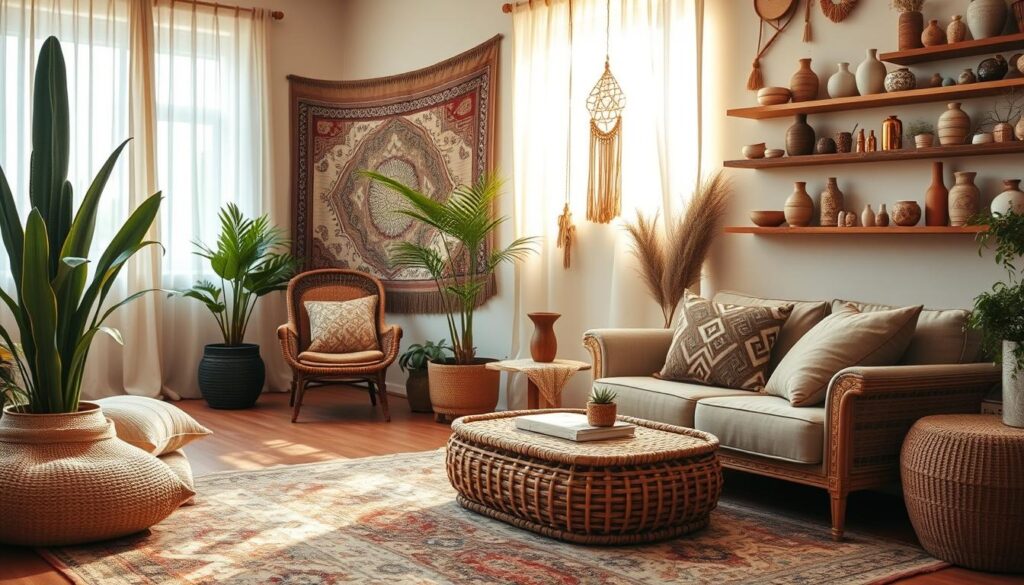
Key Attributes of Bohemian Style
Bohemian design mixes vintage and global elements. It often includes:
- Vibrant colors and patterns
- Textiles from around the world, such as Moroccan tiles and Indian fabrics
- Vintage furniture and decorative items
- Natural elements, like plants and wood
This style aims to create a cozy, inviting space that shows off your personality and travels.
Styling Tips for a Bohemian Home
To get a bohemian look, start by mixing textures and patterns. Combine vintage and global items and add lots of plants.
- Begin with a neutral base and add colorful textiles and patterns.
- Use vintage and second-hand items for character.
- Add natural elements, like woven baskets and plants.
As Elle Decor advises, “The key to bohemian style is to not be afraid to mix and match.” This eclectic style lets you create a home that’s truly unique and shows off your personality.
Coastal Interior Design
Coastal interior design focuses on light and natural elements. It’s great for making a home feel like a beach. This style brings the calm of the ocean into our homes.
Emulating the Beach Vibe
To get a beach vibe at home, make it feel open and airy. Use natural materials like wicker, jute, and driftwood. Adding sea-inspired items like shells and nautical ropes also helps.
Key Elements for a Coastal Look:
- Light, airy fabrics for upholstery and curtains
- Natural textures like wicker and jute
- Sea-inspired decorative items
- A color palette that mirrors the sea and sand
Color Palettes for Coastal Decor
The color palette is key in coastal design. It should reflect the sea’s soothing colors and the sand’s warmth. Blues and greens of the ocean, with sandy neutrals and crisp whites, make a space calm and welcoming.
| Color | Inspiration | Usage |
|---|---|---|
| Soft Blues | Calm ocean waters | Walls, bedding |
| Sandy Neutrals | Beach sand | Furniture, flooring |
| Crisp Whites | Sea foam | Trim, decor |
| Seafoam Greens | Ocean’s edge | Accent walls, accessories |
By using these elements and colors, you can make a coastal home. It will look stunning and feel relaxing, ideal for unwinding after a long day.
Farmhouse Interior Design
Farmhouse interior design is a big hit in modern homes. It mixes rustic charm with modern elegance. This style creates a warm and inviting atmosphere, perfect for those who love comfort and coziness.
Exploring Modern Farmhouse Aesthetics
Modern farmhouse design is a mix of old and new. It uses reclaimed wood, vintage decor, and modern fixtures. This blend makes a space both unique and welcoming.
Key Elements of Modern Farmhouse:
- Reclaimed wood for flooring and furniture
- Vintage decor items, such as antique furniture and distressed finishes
- Contemporary lighting fixtures and modern appliances
- Neutral color palettes with pops of color
Key Features of Farmhouse Design
Farmhouse design focuses on warmth and comfort. It includes:
| Feature | Description |
|---|---|
| Rustic Materials | Use of natural materials like wood and stone |
| Vintage Decor | Incorporation of antique and vintage items |
| Neutral Colors | Palettes that include whites, creams, and grays |
Popular Farmhouse Decor Items
Some top decor items for farmhouse style are:
- Shiplap walls and ceilings
- Vintage metalware and ceramics
- Distressed wood furniture
- Cozy textiles like throw blankets and rugs
Adding these elements helps create a warm and inviting space. It shows off the charm of farmhouse interior design.
Mid-Century Modern Interior Design
Mid-century modern design is all about organic shapes and function. It started in the mid-20th century and is loved for its simplicity and comfort. It also brings nature inside.
Hallmarks of Mid-Century Style
Mid-century modern design stands out with several key features, including:
- Clean lines and minimal ornamentation
- Organic and geometric forms
- An emphasis on functionality and simplicity
- Integration with natural surroundings
- A focus on comfort and accessibility
These elements make mid-century modern spaces feel open and fluid. Big windows, for example, let in lots of natural light. They also make it hard to tell where inside ends and outside begins.
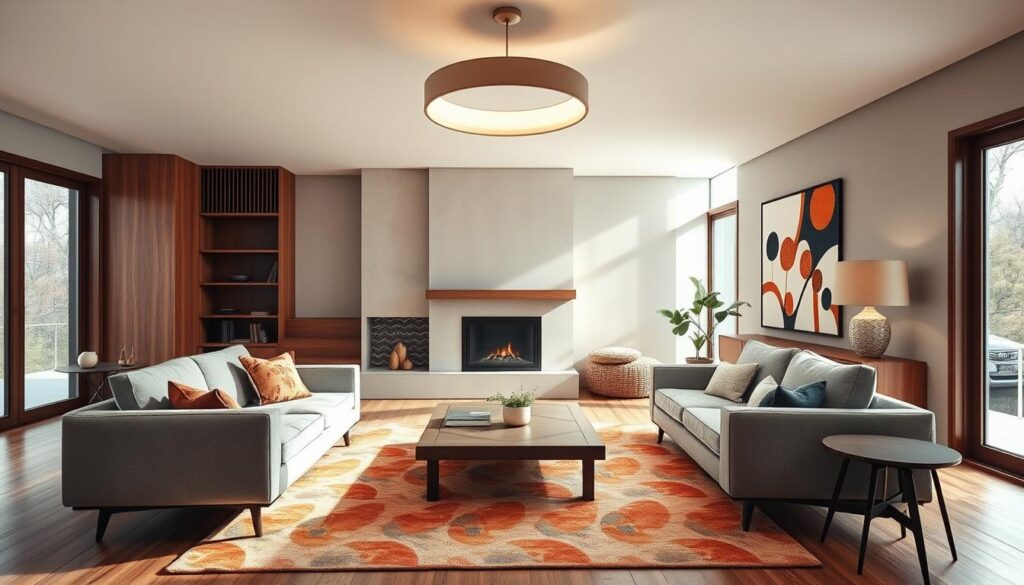
Iconic Furniture Pieces
Some furniture is truly iconic in mid-century modern design, including:
- The Eames Lounge Chair, known for its molded plywood and leather upholstery
- The Tulip Table by Eero Saarinen, characterized by its cast aluminum base and round tops
- Noguchi Coffee Tables, which combine glass and wood elements
These pieces show the style’s focus on function and simplicity. They also bring elegance to any room.
By using these hallmarks and iconic furniture, homeowners can make a mid-century modern space that’s both stylish and welcoming.
Selecting the Right Style for Your Home
Choosing the perfect interior design style for your home can be tough. There are many styles to pick from, like Modern, Contemporary, Traditional, and Rustic. It’s important to think about what you like, how you live, and your home’s architecture.
Assessing Your Space and Needs
To find the right style for your home, start by looking at your space and needs. Think about the natural light, room layout, and what you like. For example, a small, cozy apartment might look great with Minimalist or Scandinavian style.
If you have a big house, you might choose something more elaborate like Hollywood Glam or Traditional.
Personalizing Your Chosen Style
After picking a style, make it your own. Add personal items, artwork, or unique furniture that shows who you are. For more ideas and help, check out Decorilla’s guide.
This way, your home will not only show your style but also feel welcoming and cozy.

